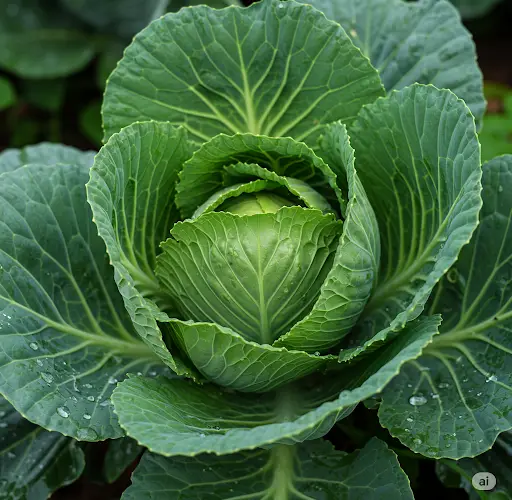Cabbage is a rewarding and nutritious vegetable that’s surprisingly easy to grow—even for beginners. With its compact heads, crisp texture, and versatility in the kitchen, cabbage is a fantastic addition to any vegetable garden. Whether you’re planting in raised beds, containers, or directly in the ground, following a few simple guidelines will help you grow healthy, full-headed cabbages from start to finish.
Here’s a beginner-friendly guide to growing cabbage successfully.
1. Choose the Right Variety
Before you plant, consider which type of cabbage is best suited to your climate and culinary needs. There are several varieties, each with different maturation periods and characteristics:
-
Green cabbage – Most common, good for salads, slaws, and cooking.
-
Red cabbage – Adds color and crunch to dishes; slightly sweeter.
-
Savoy cabbage – Has crinkled, tender leaves; excellent for stuffing or sautéing.
-
Mini or dwarf varieties – Ideal for containers or small gardens.
Some varieties mature in as little as 60 days, while others may take up to 100 days. Choose one that fits your season length and space.
2. Start Seeds Indoors or Buy Seedlings
Cabbage grows best in cool weather and can be planted either in early spring or late summer, depending on your location.
-
For spring crops, start seeds indoors 6–8 weeks before the last frost date.
-
For fall crops, sow seeds indoors or directly in the garden in midsummer.
If starting indoors:
-
Use seed trays filled with quality seed-starting mix.
-
Keep soil moist and maintain a temperature around 65–75°F (18–24°C).
-
Provide plenty of light—either on a sunny windowsill or under grow lights.
-
Harden off seedlings by gradually exposing them to outdoor conditions before transplanting.
Alternatively, buy healthy young cabbage seedlings from a local nursery to skip the seed-starting step.
3. Prepare the Soil
Cabbage prefers:
-
Full sun (at least 6 hours daily)
-
Well-drained, fertile soil
-
Slightly acidic to neutral pH (6.0–6.8)
Work compost or well-rotted manure into the soil to enrich it with nutrients. If your soil is heavy clay, consider growing cabbage in raised beds or containers to improve drainage.
4. Spacing and Planting
Space is crucial for cabbage heads to form properly. When planting:
-
Space plants 12–18 inches apart in rows that are 18–24 inches apart.
-
Plant deep enough to bury the stem up to the first set of true leaves.
-
Water well after transplanting to help the roots settle.
If planting in containers, use a pot at least 12 inches deep and wide, with nutrient-rich soil and good drainage.
5. Water and Feed Regularly
Cabbage needs consistent moisture to grow well. Irregular watering can lead to splitting heads or poor formation.
-
Water deeply 1–2 times per week, more in hot weather.
-
Apply mulch around plants to retain moisture and reduce weeds.
-
Feed with a balanced fertilizer (such as 10-10-10) every 3–4 weeks, or use compost tea as a gentle organic alternative.
6. Monitor for Pests and Diseases
Cabbage is a favorite of several garden pests, so vigilance is key. Common threats include:
-
Cabbage worms and loopers – Small green caterpillars that chew holes in leaves.
-
Aphids – Tiny sap-sucking insects that cluster on the undersides of leaves.
-
Slugs and snails – Particularly active in damp conditions.
Use row covers to protect young plants, pick pests off by hand, and spray with neem oil or insecticidal soap if infestations occur. Practice crop rotation and keep the garden clean to prevent disease buildup.
7. Know When to Harvest
Harvesting at the right time ensures optimal flavor and texture.
-
Cabbage is ready when the head feels firm and solid when gently squeezed.
-
Use a sharp knife to cut the head at the base, leaving the outer leaves and root intact.
-
You may get a bonus second crop of smaller heads later from the same plant.
Don’t wait too long to harvest, or heads may split—especially after heavy rains.
8. Store and Enjoy Your Harvest
Cabbage stores well if kept cool and dry:
-
In the refrigerator: Wrap heads in a plastic bag and store for up to 2 weeks.
-
In a root cellar: Store whole heads at 32°F (0°C) with high humidity for 1–2 months.
Use fresh cabbage in salads, coleslaw, stir-fries, soups, or even fermented into sauerkraut.
Final Tips for Success
-
Rotate crops each season to avoid pest buildup.
-
Don’t overcrowd—plants need room for airflow and growth.
-
Remove yellowing leaves to keep the plant healthy and tidy.
With the right care and timing, even first-time gardeners can enjoy a successful cabbage harvest. Follow these straightforward steps, and you’ll be rewarded with crisp, delicious heads that add flavor and nutrition to your meals.



